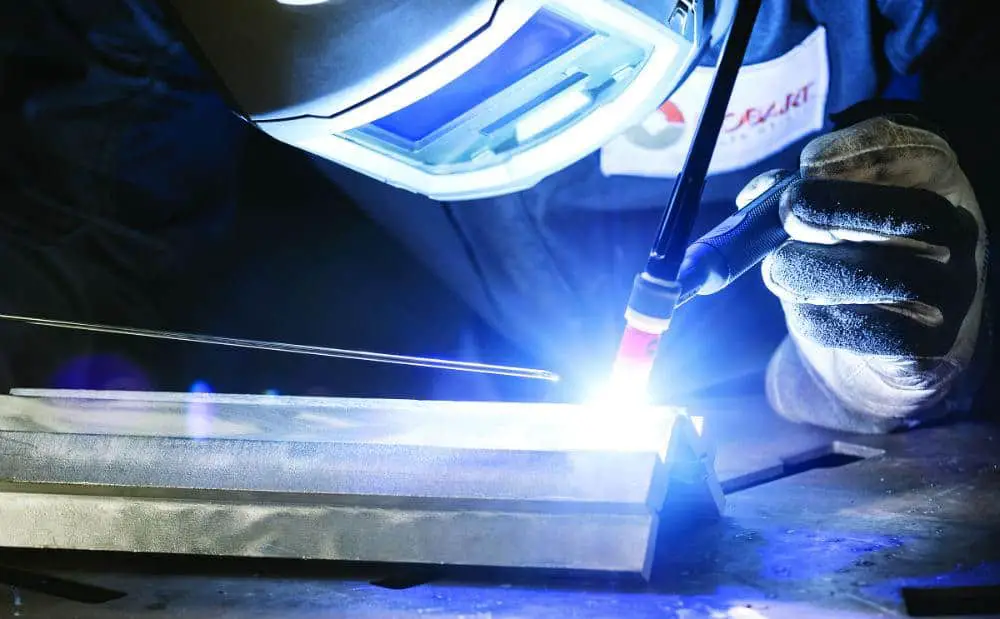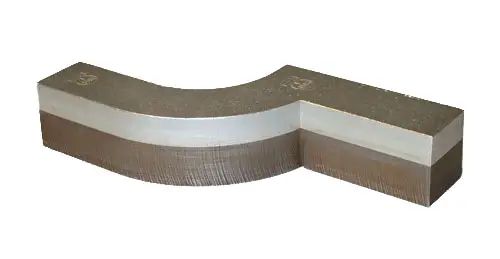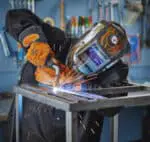We can easily weld steel to steel and aluminium to aluminium.
I being in the welding department for over 12 years now, many of my friends often ask me, “can we weld aluminium to steel?”
 To which I answer, “This is probably not a great idea to weld to steel and you cannot weld both the metals using the conventional techniques! But, if you really want to try it out, there are certainly some hacks behind it!”
To which I answer, “This is probably not a great idea to weld to steel and you cannot weld both the metals using the conventional techniques! But, if you really want to try it out, there are certainly some hacks behind it!”
Excited right?
Well, I won’t disappoint you too! I will definitely share the same techniques which I have with my friends in order to make it convenient for them to weld aluminium to steel!
But, before that…
Do you know why it isn’t a good idea to weld aluminium to steel?
The very simple reason that you cannot or will probably find it difficult to weld aluminium to steel is because of their varying melting points which are too extremes! Aluminium generally melts at around 1200 degrees F and steel on the other hand melts at 2700 degrees F. Therefore, aluminium will melt far before even your steel fillers will even form the puddle!
Not only this is the sole reason behind it, there is much to understand yet regarding the welding of these two metals and this article is just the perfect place you have landed for knowing can you weld aluminium to steel and if yes, what is the technique to weld them!
Why can’t you weld aluminium to steel?
As you know that steel and aluminium melts at different temperatures and the melting point of aluminium is far low than that of steel, therefore, welding these two metals is very difficult if not impossible.
When you will try to weld aluminium with the steel fillers, the aluminium will start to melt even before the steel fillers would have started glowing and flowing to the puddle.
Even if you try to pool the metals together, the result you will get is messy aluminium that is too lightly held by globs of steel. The weld will break off with the slightest touch of your hand.
The second reason why it is difficult to weld aluminium to steel is that the thermal expansion of aluminium is higher than that of steel, which means when heat is applied to both the metals, aluminium will grow twice in size than the steel. This will result in the welded area to crack when strain is applied.
The other factors that make it difficult to weld aluminium to steel are:
-
-
- Different thermal conductivities
- Subsidiary precipitates
- Different lattice transformations
-
Therefore, you cannot TIG, MIG or Stick weld aluminium to steel.
How do you weld aluminium to steel?
As promised, I am going to share with you some amazing ways by which you can weld aluminium to steel:
1. Bimetallic transition inserts:
This particular process uses inserts that are compounds that have steel on one side and aluminium on the other. You can use the TIG or MIG welding process to weld aluminium to steel with the help of these inserts.

You just have to keep the steel part of the insert on the steel side and the aluminium side of the inserts to the aluminium side and then apply heat to join the two metals which will be bound by these inserts. These inserts are pre-bonded with both aluminium and steel.
2. Hot dip aluminizing:
This process involves coating the steel with aluminium prior to welding. The coating is generally of an aluminium silicon alloy.
3. Using epoxy glue:
You can the epoxy glue to join both the metals together.
4. Mechanical fastening:
You can make use of rivets and bolts or folded seams to join the two metals together. This is perhaps the easiest and the cheapest ways to join aluminium and steel.
5. Brazing:
This involves coating the steel surface with silver solder and then using an aluminium filler alloy to weld the two metals together.
Does aluminium weaken when welded?
Yes, welding aluminium definitely weakens the metal. This is because the heat applied in welding o aluminium affects the temper of the metal which results in the loss of the yield strength of aluminium.
Another reason that aluminium weakens when welded is that is that aluminium cools too fast after the welding is complete. It cools off so fast that the puddle sinks in like a crater and this ultimately causes a lot of stress on the weld.
What happens if you weld aluminium with steel wire?
When you weld aluminium with steel wire, brittle intermetallic compounds start to form.
In order to avoid this, you can make use of the following three techniques:
-
-
- You can coat the steel wire in aluminium before welding. This is commonly referred to as the hot dip aluminizing technique.
- You can use brazing techniques which involves coating the steel surface with silver solder and then weld the two metals together using the aluminium filler alloy.
- You can create a bimetallic transition insert. These inserts are comprised of equal parts of aluminium and steel or stainless steel that are already bonded to the aluminium.
-
What type of welding is used for aluminium?
The most common type of welding used for aluminium is the Gas Tungsten Arc Welding (GTAW) which is commonly known as the TIG welding.
Another process that is used to weld aluminium is the Gas Metal Arc Welding (GMAW) which is commonly known as the MIG welding.
Also, there are various other ways to weld aluminium which are as follows:
-
-
- Laser beam and electron beam welding
- Resistance welding
- Shielded metal arc welding (SMAW)
-
Let’s wrap it up!
So, you see while welding aluminium to steel isn’t a great idea, still there are ways by which you can definitely weld the two metals together and believe me it’s not tough.
Do try the ways I mentioned and we will be back soon with another exciting article for you!
Till then, take care, stay safe and keep trying the odds of welding with our articles!






